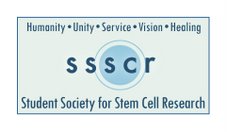NIH Delays Grant Comparing Amniotic, Embryonic, and Placental Stem
Cells
By Steven Edwards August 01, 2007 | 6:47:39 PMCategories: Policy,
Stem Cell Research
The National Institutes of Health (NIH) is refusing to approve a
grant application that would provide the pre-clinical data to
potentially move stem cell therapies for diabetes, myocardial
infarction, and macular degeneration into human clinical trials.
I spoke with Robert Lanza, stem cell scientist and one of the grant
authors, yesterday by phone. What I learned should anger both
opponents and supporters of embryonic stem cell (ESC) research.
Lanza told me that the $3.5 million three-year grant request aimed to
characterize the abilities and properties of four different types of
stem cell lines: the Bush-approved ESCs, ESCs derived using Advanced
Cell Technology's non-destructive method, placental stem cells, and
amniotic fluid stem cells (AFSCs).
The team's goals included determining which cell lines could become
which cell types (e.g., insulin-producing, neural, mesoderm) and
which cell lines produced the most effective cells to treat various
diseases in animals. As some ESC lines may be better than other ESC
lines at certain functions, the tests would also be performed between
cell lines of the same type.
The results of the in-vivo (live animal) tests would determine which
stem-cell line would be best to use to treat each disease. Perhaps
ESCs would show the most promise for neural conditions (macular
degeneration) while AFSCs would be most promising for diabetes, or
placental stem cells could be most promising for everything.
The team behind this proposed study hoped to discover the answer
these questions, but the NIH blamed Bush's stem-cell regulations for
preventing it from going forward.
The problem was outlined, in part, by a Boston Globe article on
Monday. The article focuses on how the language governing stem cell
research is actually impeding it, but fails to clarify an important
point -- what's actually causing the delay.
Current regulations, imposed by President Bush in 2001, restricting
federal funding to only those ESC lines derived prior to August 9,
2001 disqualify the grant application as is because it asks for funds
to study newer ESC lines. But newer regulations issued by Bush in
April may allow the grant to move forward, as it would allow federal
funding for ESCs that were obtained "without creating [...]
destroying, discarding, or subjecting to harm a human embryo or
fetus."
The Globe article focuses much of its attention on how the NIH is
unsure if Lanza's (Advanced Cell Technology's) technique actually
harms the embryo -- which is an important question -- but it
misrepresents the most infuriating aspect of this story.
The group submitted a proposal to the NIH in February, then waited.
Eventually, the NIH told the team that it had referred the proposal
to a different review group. Then, in a series of e-mails, the agency
backed off further, first encouraging the applicants to drop Lanza's
cells from the proposal and, finally, when the team refused to do so,
informing them that the application was being sidelined indefinitely
for "administrative review."
Lanza told me that he did offer to drop his cells from the proposal
if they presented a problem, but the NIH wouldn't go along with it.
The NIH asked them to resubmit the application without his cells,
which would have pushed the new application to the back of the line
in the review process.
Lanza offered me the following excerpts from his email exchange with
the NIH to prove that he did make the offer:
While I appreciate that the NIH is dealing with complicated new
issues for this grant application, I think you can also understand
the concern that researchers in this field will have that such as
review process proceeds sub rosa. In the case of the research
proposed in mine and similar grant applications, months of review may
translate into lost opportunities to make differences in the lives of
many many patients. Again, I respectfully submit that this grant
application is entitled to a timely and meaningful review....In my
original email to you, I offered to remove the blastomere derived
line from the application if the administrative review concluded that
this part of the proposed research could not be funded. I saw this
as fair means to permit the parallel review process to occur. My
concern of course is keeping the current application in the que and
moving forward, rather than having the clock effectively reset to the
next review period.
With Lanza's cells out of the application, as he offered, the grant
could have been approved even under the current regulations. The NIH
apparently didn't see this as fair, which is unfortunate.
Are ESCs really better than their amniotic or placental counterparts?
This grant could tell us, but the answer will take longer to get here
thanks to the NIH.
http://blog.
«¤»¥«¤»§«¤»¥«¤»§«¤»¥«¤»«¤»¥«¤»§«¤»¥«¤»§«¤»¥«
¯¯¯¯¯¯¯¯¯¯¯¯¯¯¯¯¯¯¯¯¯¯¯¯¯¯¯¯¯¯¯¯¯¯¯¯¯¯¯¯¯¯¯¯
StemCells subscribers may also be interested in these sites:
Children's Neurobiological Solutions
http://www.CNSfoundation.org/
Cord Blood Registry
http://www.CordBlood.com/at.cgi?a=150123
The CNS Healing Group
http://groups.yahoo.com/group/CNS_Healing
____________________________________________
«¤»¥«¤»§«¤»¥«¤»§«¤»¥«¤»«¤»¥«¤»§«¤»¥«¤»§«¤»¥«
¯¯¯¯¯¯¯¯¯¯¯¯¯¯¯¯¯¯¯¯¯¯¯¯¯¯¯¯¯¯¯¯¯¯¯¯¯¯¯¯¯¯¯¯
Change settings via the Web (Yahoo! ID required)
Change settings via email: Switch delivery to Daily Digest | Switch format to Traditional
Visit Your Group | Yahoo! Groups Terms of Use | Unsubscribe
__,_._,___










